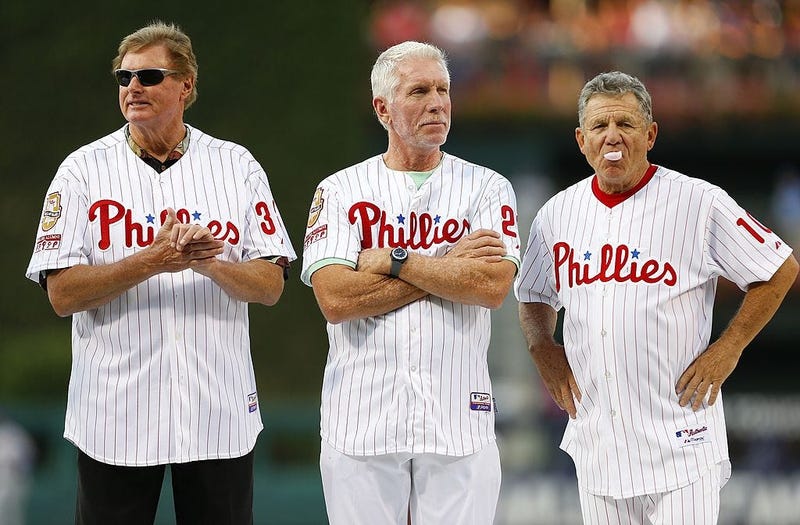
The 1980 Phillies was a team that certainly had its window closing to win with a homegrown core of Mike Schmidt, who played with the Phils until 1989, Larry Bowa, who went to Chicago in 1982, Bob Boone, who joined the Angels in 1982 and Luzinski, whose final year in Philadelphia was 1980, after spending over a decade with the organization.
After playoff disappointments in 1976, 1977 and 1978, then missing the postseason entirely in 1979, 1980 wasn’t supposed to be a magical year for the Phils.
But, it ended up producing a franchise first, something it hadn’t accomplished in the previous 96 years of its existence — a world championship. And they did so in Dallas Green’s first full year as manager.
“Bull” remembered that Green was certainly different than his predecessor, Danny Ozark.
“Danny was kind of a more laid back guy and Dallas was kind of the guy that wanted to be heard,” Luzinski said. “ ... He just felt that he had to push us to get more out of us because we were together so long ... We won a World Series, so he must’ve been doing something right,” he added.
Many recall an August doubleheader in Pittsburgh when Green let the team have it in the clubhouse in between games. When that day was done, the Phils were 55-52.
After that, they went 36-19 over their last 55 regular season games. They clinched the Eastern Division the second to last day of the season in Montreal, which led to an absolutely grueling five-game NLCS versus the Houston Astros.
Four of the five games went into extra innings, the Phils found themselves down 2-1 in the series and then rallied to force a decisive fifth game at the Houston Astrodome.
Trailing 5-2 in the eighth inning to Nolan Ryan was a daunting task, but the Phillies rallied, finally won a League Championship Series and advanced to their first World Series since 1950.
It was certainly special to Luzinski.
“We had some great clubs. Probably the best in Phillies history. We had some nice runs ... We had some tremendous ball clubs. We had a tremendous starting eight that would go out there with a tremendous bench put together by Dallas Green and Paul Owens,” he said.
In the World Series against the Royals, the Phillies took the first two games at Veteran Stadium, but lost the next two in Kansas City. But, in Game 4, reliever Dickie Noles threw high and inside to Royals All-Star George Brett, knocking him on the ground.
Many consider that the turning point in the series.
“It’s not that he wanted to hit him purposely, but he wanted to get him back off the plate, and ended up throwing probably one of the most perfect balls in his life,” Luzinski said with a chuckle.
Game 5 featured another comeback by the Phils, allowing them to take a 3-2 series lead back to Game 6 at Veterans Stadium with ace Steve Carlton getting the start.
With “Lefty” on the mound, Kansas City didn’t stand a chance.
World Series MVP Mike Schmidt drove in two runs, Carlton tossed seven-plus innings, and Tug McGraw closed out the last two.
McGraw, who was brilliant in the second half of 1980, including the postseason, loaded the bases with a three-run lead.
The second out was a flukey foul out bobbled by catcher Bob Boone in front of the Phillies dugout, but caught by first baseman Pete Rose. Then, “Tugger” struck out Willie Wilson, and finally the Phillies won a World Series.
